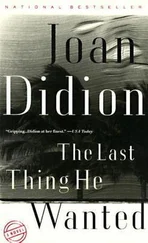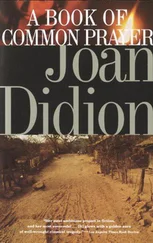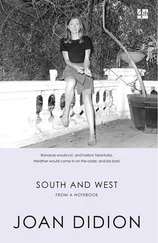I went out there with him a while ago. Any child could imagine a prison more like a prison than Alcatraz looks, for what bars and wires there are seem perfunctory, beside the point; the island itself was the prison, and the cold tide its wall. It is precisely what they called it: the Rock. Bill Doherty and Duke lowered the dock for us, and in the station wagon on the way up the cliff Bill Doherty told Mr. Scott about small repairs he had made or planned to make. Whatever repairs get made on Alcatraz are made to pass the time, a kind of caretaker s scrimshaw, because the government pays for no upkeep at all on the prison; in 1963 it would have cost five million dollars to repair, which is why it was abandoned, and the $24,000 a year that it costs to maintain Alcatraz now is mostly for surveillance, partly to barge in the 400,000 gallons of water that Bill Doherty and the Harts use every year (there is no water at all on Alcatraz, one impediment to development), and the rest to heat two apartments and keep some lights burning. The buildings seem quite literally abandoned. The key locks have been ripped from the cell doors and the big electrical locking mechanisms disconnected. The tear-gas vents in the cafeteria are empty and the paint is buckling everywhere, corroded by the sea air, peeling off in great scales of pale green and ocher. I stood for a while in Al Capone’s cell, five by nine feet, number 200 on the second tier of B Block, not one of the view cells, which were awarded on seniority, and I walked through the solitary block, totally black when the doors were closed. “Snail Mitchel,” read a pencil scrawl on the wall of Solitary 14. “The only man that ever got shot for walking too slow.” Beside it was a calendar, the months penciled on the wall with the days scratched off, May, June, July, August of some unnumbered year.
Mr. Scott, whose interest in penology dates from the day his office acquired Alcatraz as a potential property, talked about escapes and security routines and pointed out the beach where Ma Barker’s son Doc was killed trying to escape. (They told him to come back up, and he said he would rather be shot, and he was.) I saw the shower room with the soap still in the dishes. I picked up a yellowed program from an Easter service (Why seek ye the living among the dead? He is not here, but is risen) and I struck a few notes on an upright piano with the ivory all rotted from the keys and I tried to imagine the prison as it had been, with the big lights playing over the windows all night long and the guards patrolling the gun galleries and the silverware clattering into a bag as it was checked in after meals, tried dutifully to summon up some distaste, some night terror of the doors locking and the boat pulling away. But the fact of it was that I Uked it out there, a ruin devoid of human vanities, clean of human illusions, an empty place reclaimed by the weather where a woman plays an organ to stop the wind’s whining and an old man plays ball with a dog named Duke. I could tell you that I came back because I had promises to keep, but maybe it was because nobody asked me to stay.
1967
I went to Newport not long ago, to see the great stone fin-de-siècle “cottages” in which certain rich Americans once summered. The places loom still along Bellevue Avenue and Cliff Walk, one after another, silk curtains frayed but gargoyles intact, monuments to something beyond themselves; houses built, clearly, to some transcendental point. No one had made clear to me exactly what that point was. I had been promised that the great summer houses were museums and warned that they were monstrosities, had been assured that the way of life they suggested was graceful beyond belief and that it was gross beyond description, that the very rich were different from you and me and yes, they had lower taxes, and if “The Breakers” was perhaps not entirely tasteful, still, où sont les croquet wickets d’antan. I had read Edith Wharton and I had read Henry James, who thought that the houses should stand there always, reminders “of the peculiarly awkward vengeances of affronted proportion and discretion.”
But all that turns out to be beside the point, all talk of taxes and taste and affronted proportion. If, for example, one pursues the course, as Mrs. Richard Gambrill did in 1900, of engaging the architect who did the New York Public Library, approving plans for an eighteenth-century French chateau on a Rliode Island beach, ordering the garden copied after one Henry VIII gave to Anne Boleyn, and naming the result “Vernon Court,” one moves somehow beyond the charge of breached “discretion.” Something else is at work here. No aesthetic judgment could conceivably apply to the Newport of Bellevue Avenue, to those vast follies behind their hand-wrought gates; they are products of the metastasis of capital, the Industrial Revolution carried to its logical extreme, and what they suggest is how recent are the notions that life should be “comfortable,” that those who live it should be “happy.”
“Happiness” is, after all, a consumption ethic, and Newport is the monument of a society in which production was seen as the
moral point, the reward if not exactly the end, of the economic process. The place is devoid of the pleasure principle. To have had the money to build “The Breakers” or “Marble House” or “Ochre Court” and to choose to build at Newport is in itself a denial of possibilities; the island is physically ugly, mean without the saving grace of extreme severity, a landscape less to be enjoyed than dominated. The prevalence of topiary gardening in Newport suggests the spirit of the place. And it was not as if there were no other options for these people: William Randolph Hearst built not at Newport but out on the edge of the Pacific. San Simeon, whatever its peculiarities, is in fact la cuesta encantada, swimming in golden light, sybaritic air, a deeply romantic place. But in Newport the air proclaims only the sources of money. Even as the sun dapples the great lawns and the fountains plash all around, there is something in the air that has nothing to do with pleasure and nothing to do with graceful tradition, a sense not of how prettily money can be spent but of how harshly money is made, an immediate presence of the pits and the rails and the foundries, of turbines and pork-belly futures. So insistent is the presence of money in Newport that the mind springs ineluctably to the raw beginnings of it. A contemplation of “Rosecliff” dissolves into the image of Big Jim Fair, digging the silver out of a mountain in Nevada so that his daughter might live in Newport. “Old Man Berwind, he’d turn in his grave to see that oil truck parked in the driveway,” a guard at “The Elms” said to me as we surveyed the sunken garden there. “He made it in coal, soft coal.” It had been on my mind as well as on the guards, even as we stood in the sunlight outside the marble summer house, coal, soft coal, words like bituminous and anthracite, not the words of summer fancy.
In that way Newport is curiously Western, closer in spirit to Virginia City than to New York, to Denver than to Boston. It has the stridency usually credited to the frontier. And, like the frontier, it was not much of a game for women. Men paid for Newport, and granted to women the privilege of living in it. Just as gilt vitrines could be purchased for the correct display of biscuit Sevres, so marble stairways could be bought for the advantageous display of women. In the filigreed gazebos they could be exhibited in a different light; in the French sitting rooms, in still another setting. They could be cajoled, flattered, indulged, given pretty rooms and Worth dresses, allowed to imagine that they ran their own houses and their own lives, but when it came time to negotiate, their freedom proved trompe l’oeil. It was the world of Bailey’s Beach which made a neurasthenic of Edith Wharton, and, against her will, the Duchess of Marlborough of Consuelo Vanderbilt. The very houses are men’s houses, factories, undermined by tunnels and service railways, shot through with plumbing to collect salt water, tanks to store it, devices to collect rain water, vaults for table silver, equipment inventories of china and crystal and “Tray cloths — fine” and “Tray cloths — ordinary.” Somewhere in the bowels of “The Elms” is a coal bin twice the size of Julia Berwind’s bedroom. The mechanics of such houses take precedence over all desires or inclinations; neither for great passions nor for morning whims can the factory be shut down, can production — of luncheons, of masked balls, of marrons glacés —be slowed. To stand in the dining room of “The Breakers” is to imagine fleeing from it, pleading migraine.
Читать дальше












